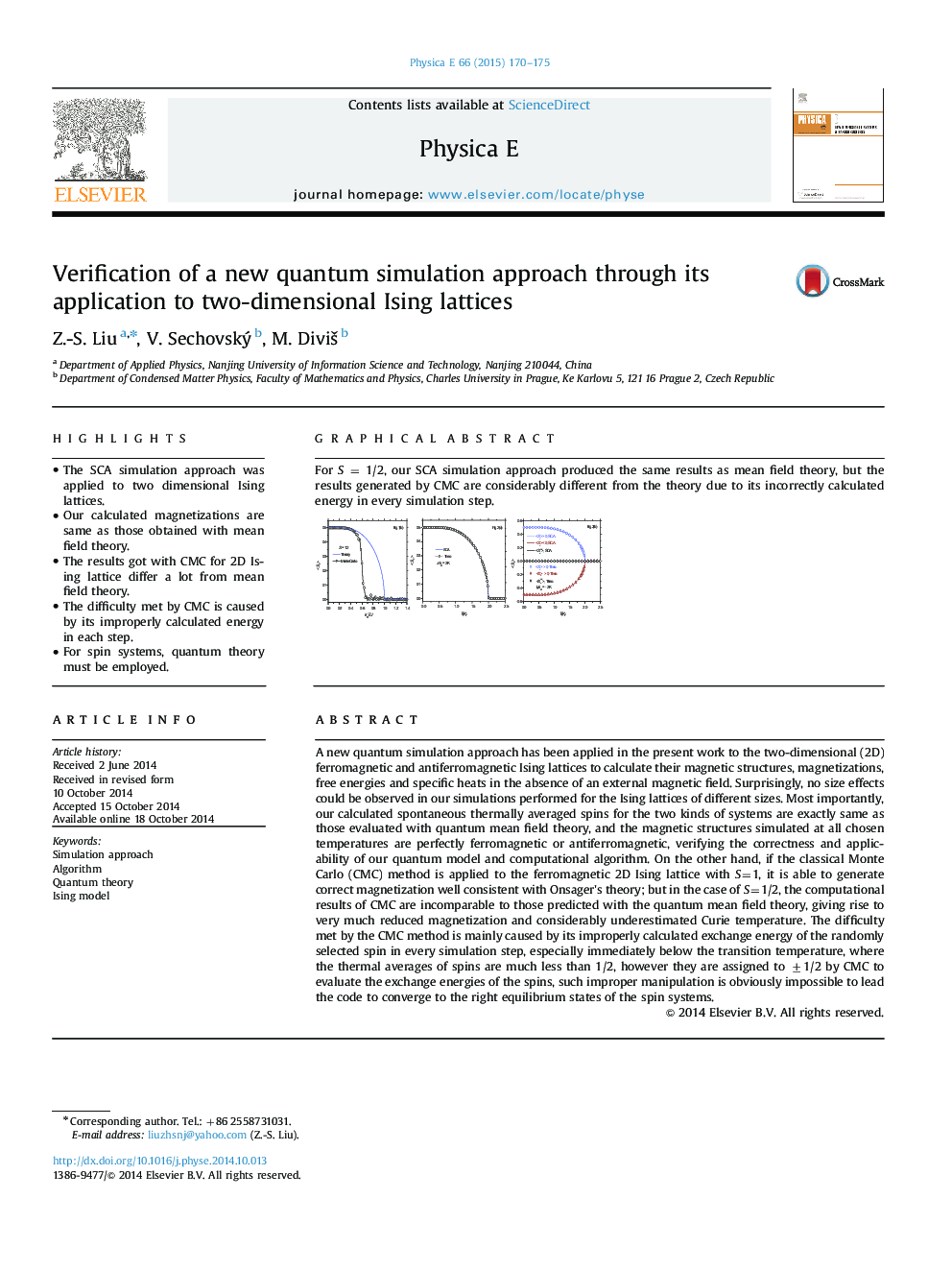| کد مقاله | کد نشریه | سال انتشار | مقاله انگلیسی | نسخه تمام متن |
|---|---|---|---|---|
| 1544140 | 1512883 | 2015 | 6 صفحه PDF | دانلود رایگان |

• The SCA simulation approach was applied to two dimensional Ising lattices.
• Our calculated magnetizations are same as those obtained with mean field theory.
• The results got with CMC for 2D Ising lattice differ a lot from mean field theory.
• The difficulty met by CMC is caused by its improperly calculated energy in each step.
• For spin systems, quantum theory must be employed.
A new quantum simulation approach has been applied in the present work to the two-dimensional (2D) ferromagnetic and antiferromagnetic Ising lattices to calculate their magnetic structures, magnetizations, free energies and specific heats in the absence of an external magnetic field. Surprisingly, no size effects could be observed in our simulations performed for the Ising lattices of different sizes. Most importantly, our calculated spontaneous thermally averaged spins for the two kinds of systems are exactly same as those evaluated with quantum mean field theory, and the magnetic structures simulated at all chosen temperatures are perfectly ferromagnetic or antiferromagnetic, verifying the correctness and applicability of our quantum model and computational algorithm. On the other hand, if the classical Monte Carlo (CMC) method is applied to the ferromagnetic 2D Ising lattice with S=1, it is able to generate correct magnetization well consistent with Onsager's theory; but in the case of S=1/2, the computational results of CMC are incomparable to those predicted with the quantum mean field theory, giving rise to very much reduced magnetization and considerably underestimated Curie temperature. The difficulty met by the CMC method is mainly caused by its improperly calculated exchange energy of the randomly selected spin in every simulation step, especially immediately below the transition temperature, where the thermal averages of spins are much less than 1/2, however they are assigned to ±1/2 by CMC to evaluate the exchange energies of the spins, such improper manipulation is obviously impossible to lead the code to converge to the right equilibrium states of the spin systems.
For S = 1/2, our SCA simulation approach produced the same results as mean field theory, but the results generated by CMC are considerably different from the theory due to its incorrectly calculated energy in every simulation step.Figure optionsDownload as PowerPoint slide
Journal: Physica E: Low-dimensional Systems and Nanostructures - Volume 66, February 2015, Pages 170–175